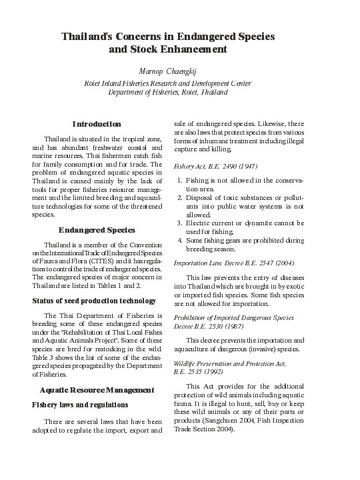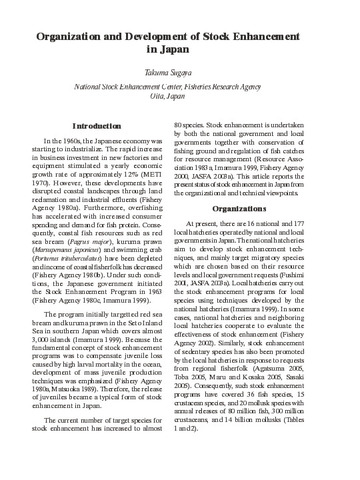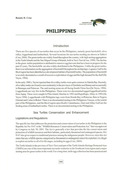Methodology to Estimate Bycatch and Discards
Share
Abstract
FAO Fisheries Technical Paper 339 (1994) provided the first estimation of global bycatch and discards, however, the estimated discards of 27 million tons have been abolished at FAO Consultation Meeting in Tokyo (1996). This was attributed to application of its discard ratios, total discard/landing of target species, to total landing with little respect to multi-species fisheries, which resulted in over-estimates of fishing effort and, consequently, discards. In order to determine the methodology for estimation of discards in multi-species fisheries in Asia, it is important to take into account; (1) it is difficult to segregate target and bycatch species, and (2) discards of species are not necessarily correlated to landing of single species positively. Therefore, the realistic approach is to define discard ratios as total discard/total landing and species discard ratios, if necessary, also against total landing in each fishing sector. Several methods to estimate bycatch and discards have been proposed recently with increasing concern to by-catch and discard issues, while information of by-catch in multi-species fisheries is scarce. Researches on characteristic discards in multi-species fisheries in the Region must be promoted for the regional fisheries to contribute in the international fisheries management.
Suggested Citation
Matsuoka, T. (1997). Methodology to estimate bycatch and discards. In Proceeding of the Regional Workshop on Responsible Fishing, Bangkok, Thailand, 24-27 June 1997 (pp. 207-217). Samut Prakarn, Thailand: Training Department, Southeast Asian Fisheries Development Center.
Subject
Related items
Showing items related by title, author, creator and subject.
-
Thailand's concerns in endangered species and stock enhancement
Chaengkij, Marnop (Aquaculture Department, Southeast Asian Fisheries Development Center, 2006)The paper provides a comprehensive list of endangered freshwater, brackishwater, and marine aquatic species in Thailand. The Thai Department of Fisheries is breeding some of the endangered species under the “Rehabilitation ... -
Organization and development of stock enhancement in Japan
Sugaya, Takuma (Aquaculture Department, Southeast Asian Fisheries Development Center, 2006)In the 1960s, the Japanese economy was starting to industrialize. The rapid increase in business investment in new factories and equipment stimulated a yearly economic growth rate of approximately 12% (METI 1970). However, ... -
Philippines
Cruz, Renato D. (Marine Fishery Resources Development and Management Department, Southeast Asian Fisheries Development Center, 2004)There are five species of sea turtles that occur in the Philippines, namely green hawksbill, olive ridley, loggerhead and leatherback. Several locations for sea turtles nesting are shown in Table 6 (Cruz, 2004). The green ...





